- Home
- Jules Verne
The Field of Ice Page 7
The Field of Ice Read online
Page 7
THE PORPOISE
It was the 24th of March, and Palm Sunday, a bright, joyous day inmany a town and village of the Old World, but in this desolateregion what mournful silence prevailed! No willow branches here withtheir silvery blossom--not even a single withered leaf to be seen--not a blade of grass!
Yet this was a glad day to the travellers, for it promised themspeedy deliverance from the death that had seemed so inevitable.
They hastened onward, the dogs put forth renewed energy, and Dukbarked his loudest, till, before long, they arrived at the ship. ThePorpoise was completely buried under the snow. All her masts andrigging had been destroyed in the shipwreck, and she was lying on abed of rocks so entirely on her side that her hull was uppermost.
They had to knock away fifteen feet of ice before they could evencatch a glimpse of her, and it was not without great difficulty thatthey managed to get on board, and made the welcome discovery thatthe provision stores had not been visited by any four-footedmarauders. It was quite evident, however, that the ship was nothabitable.
"Never mind!" said Hatteras, "we must build a snow-house, andmake ourselves comfortable on land."
"Yes, but we need not hurry over it," said the Doctor; "let usdo it well while we're about it, and for a time we can make shifton board; for we must build a good, substantial house, that willprotect us from the bears as well as the cold. I'll undertake tobe the architect, and you shall see what a first-rate job I'llmake of it."
"I don't doubt your talents, Mr. Clawbonny," replied Johnson;"but, meantime, let us see about taking up our abode here, andmaking an inventory of the stores we find. There does not seem aboat visible of any description, and I fear these timbers are in toobad a condition to build a new ship out of them."
"I don't know that," returned Clawbonny, "time and thoughtdo wonders; but our first business is to build a house, and not aship; one thing at a time, I propose."
"And quite right too," said Hatteras; "so we'll go ashoreagain."
They returned to the sledge, to communicate the result of theirinvestigation to Bell and Altamont; and about four in the afternoonthe five men installed themselves as well as they could on thewreck. Bell had managed to make a tolerably level floor with planksand spars; the stiffened cushions and hammocks were placed round thestove to thaw, and were soon fit for use. Altamont, with theDoctor's assistance, got on board without much trouble, and a sighof satisfaction escaped him as if he felt himself once more athome--a sigh which to Johnson's ear boded no good.
The rest of the day was given to repose, and they wound up with agood supper off the remains of the bear, backed by a plentifulsupply of biscuit and hot tea.
The poor fellows felt like colonists safely arrivedat their destination--P.57]
It was late next morning before Hatteras and his companions woke,for their minds were not burdened now with any solicitudes about themorrow, and they might sleep as long as they pleased. The poorfellows felt like colonists safely arrived at their destination, whohad forgotten all the sufferings of the voyage, and thought only ofthe new life that lay before them.
"Well, it is something at all events," said the Doctor, rousinghimself and stretching his arms, "for a fellow not to need to askwhere he is going to find his next bed and breakfast."
"Let us see what there is on board before we say much," saidJohnson.
The Porpoise has been thoroughly equipped and provisioned for a longvoyage, and, on making an inventory of what stores remained, theyfound 6150 lbs. of flour, fat, and raisins; 2000 lbs. of salt beefand pork, 1500 lbs. of pemmican; 700 lbs. of sugar, and the same ofchocolate; a chest and a half of tea, weighing 96 lbs.; 500 lbs. ofrice; several barrels of preserved fruits and vegetables; a quantityof lime-juice, with all sorts of medicines, and 300 gallons of rumand brandy. There was also a large supply of gunpowder, ball, andshot, and coal and wood in abundance.
Altogether, there was enough to last those five men for more thantwo years, and all fear of death from starvation or cold was at anend.
"Well, Hatteras, we're sure of enough to live on now," saidthe Doctor, "and there is nothing to hinder us reaching thePole."
"The Pole!" echoed Hatteras.
"Yes, why not? Can't we push our way overland in the summermonths?"
"We might overland; but how could we cross water?"
"Perhaps we may be able to build a boat out of some of theship's planks."
"Out of an American ship!" exclaimed the captain, contemptuously.
Clawbonny was prudent enough to make no reply, and presently changedthe conversation by saying--
"Well, now we have seen what we have to depend upon, we must beginour house and store-rooms. We have materials enough at hand; and,Bell, I hope you are going to distinguish yourself," he added.
"I am ready, Mr. Clawbonny," replied Bell; "and, as formaterial, there is enough for a town here with houses and streets."
"We don't require that; we'll content ourselves with imitatingthe Hudson's Bay Company. They entrench themselves in fortressesagainst the Indians and wild beasts. That's all we need--a houseone side and stores the other, with a wall and two bastions. I musttry to make a plan."
"Ah! Doctor, if you undertake it," said Johnson, "I am sureyou'll make a good thing of it."
"Well, the first part of the business is to go and choose theground. Will you come with us Hatteras?"
"I'll trust all that to you, Doctor," replied the captain."I'm going to look along the coast."
Altamont was too feeble yet to take part in any work, so he remainedon the ship, while the others commenced to explore the unknowncontinent.
On examining the coast, they found that the Porpoise was in a sortof bay bristling with dangerous rocks, and that to the west, far asthe eye could reach, the sea extended, entirely frozen now, thoughif Belcher and Penny were to be believed, open during the summermonths. Towards the north, a promontory stretched out into the sea,and about three miles away was an island of moderate size. Theroadstead thus formed would have afforded safe anchorage to ships,but for the difficulty of entering it. A considerable distanceinland there was a solitary mountain, about 3000 feet high, by theDoctor's reckoning; and half-way up the steep rocky cliffs thatrose from the shore, they noticed a circular plateau, open on threesides to the bay and sheltered on the fourth by a precipitous wall,120 feet high.
This seemed to the Doctor the very place for this house, from itsnaturally fortified situation. By cutting steps in the ice, theymanaged to climb up and examine it more closely.
]
They were soon convinced they could not have a better foundation,and resolved to commence operations forthwith, by removing the hardsnow more than ten feet deep, which covered the ground, as bothdwelling and storehouses must have a solid foundation.
This preparatory work occupied the whole of Monday, Tuesday, andWednesday. At last they came to hard granite close in grain, andcontaining garnets and felspar crystals, which flew out with everystroke of the pickaxe.
]
The dimensions and plan of the snow-house were then settled by theDoctor. It was to be divided into three rooms, as all they neededwas a bed-room, sitting-room and kitchen. The sitting-room was to bein the middle, the kitchen to the left, and the bed-room to theright.
For five days they toiled unremittingly. There was plenty ofmaterial, and the walls required to be thick enough to resist summerthaws. Already the house began to present an imposing appearance.There were four windows in front, made of splendid sheets of ice, inEsquimaux fashion, through which the light came softly in as ifthrough frosted glass.
Outside there was a long covered passage between the two windows ofthe sitting-room. This was the entrance hall, and it was shut in bya strong door taken from the cabin of the Porpoise. The Doctor washighly delighted with his performance when all was finished, forthough it would have been difficult to say to what style ofarchitecture it belonged, it was strong, and that was the chiefthing.
The next business was to move in a
ll the furniture of the Porpoise.The beds were brought first and laid down round the large stove inthe sleeping room; then came chairs, tables, arm-chairs, cupboards,and benches for the sitting-room, and finally the ship furnaces andcooking utensils for the kitchen. Sails spread on the ground didduty for carpets, and also served for inner doors.
]
The walls of the house were over five feet thick, and the windowsresembled port-holes for cannon. Every part was as solid aspossible, and what more was wanted? Yet if the Doctor could have hadhis way, he would have made all manner of ornamental additions, inhumble imitation of the Ice Palace built in St. Petersburgh inJanuary, 1740, of which he had read an account. He amused hiscompanions after work in the evening by describing its grandeur, thecannons in front, and statues of exquisite beauty, and the wonderfulelephant that spouted water out of his trunk by day and flamingnaphtha by night--all cut out of ice. He also depicted theinterior, with tables, and toilette tables, mirrors, candelabra,tapers, beds, mattresses, pillows, curtains, time-pieces, chairs,playing-cards, wardrobes, completely fitted up--in fact, everythingin the way of furniture that could be mentioned, and the wholeentirely composed of ice.
It was on Easter Sunday, the 31st of March, when the travellersinstalled themselves in their new abode and after holding divineservice in the sitting-room, they devoted the remainder of the dayto rest.
Next morning they set about building the storehouses and powdermagazine. This took a whole week longer, including the time spent inunloading the vessel, which was a task of considerable difficulty,as the temperature was so low, that they could not work for manyhours at a time. At length on the 8th of April, provisions, fuel,and ammunition were all safe on terra firma, and deposited in theirrespective places. A sort of kennel was constructed a littledistance from the house for the Greenland dogs, which the Doctordignified by the name of "Dog Palace." Duk shared his master'squarters.
All that now remained to be done was to put a parapet right roundthe plateau by way of fortification.
]
By the 15th this was also completed, and the snow-house might biddefiance to a whole tribe of Esquimaux, or any other hostileinvaders, if indeed any human beings whatever were to be found onthis unknown continent, for Hatteras, who had minutely examined thebay and the surrounding coast, had not been able to discover theleast vestiges of the huts that are generally met with on shoresfrequented by Greenland tribes. The shipwrecked sailors of thePorpoise and Forward seemed to be the first whose feet had ever trodthis lone region.
CHAPTER VII.

 Michael Strogoff; Or the Courier of the Czar: A Literary Classic
Michael Strogoff; Or the Courier of the Czar: A Literary Classic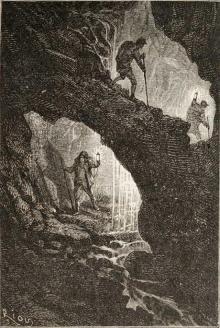 Voyage au centre de la terre. English
Voyage au centre de la terre. English Journey Through the Impossible
Journey Through the Impossible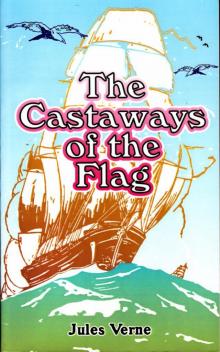 The Castaways of the Flag
The Castaways of the Flag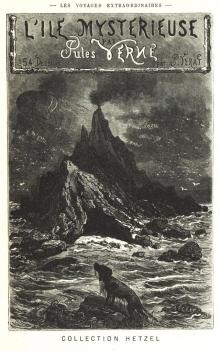 L'île mystérieuse. English
L'île mystérieuse. English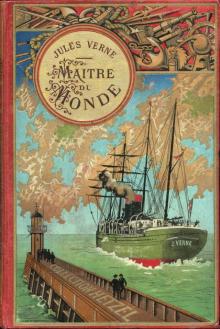 Maître du monde. English
Maître du monde. English Around the World in Eighty Days
Around the World in Eighty Days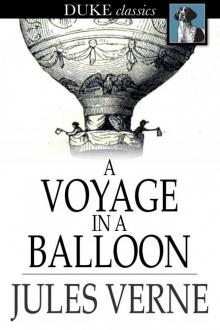 A Voyage in a Balloon
A Voyage in a Balloon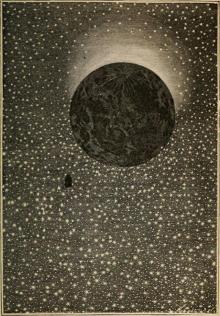 From the Earth to the Moon, Direct in Ninety-Seven Hours and Twenty Minutes: and a Trip Round It
From the Earth to the Moon, Direct in Ninety-Seven Hours and Twenty Minutes: and a Trip Round It Paris in the Twentieth Century
Paris in the Twentieth Century City in the Sahara - Barsac Mission 02
City in the Sahara - Barsac Mission 02 The English at the North Pole
The English at the North Pole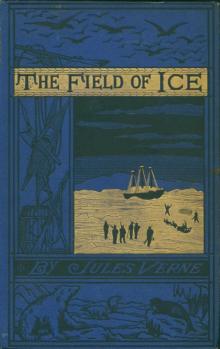 The Field of Ice
The Field of Ice From the Earth to the Moon
From the Earth to the Moon Un capitaine de quinze ans. English
Un capitaine de quinze ans. English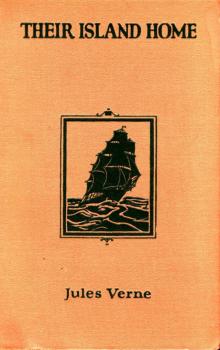 The Mysterious Island
The Mysterious Island Les indes-noirs. English
Les indes-noirs. English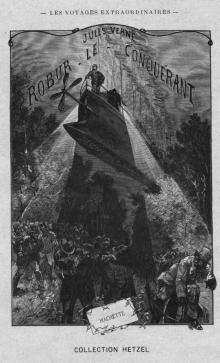 Robur-le-conquerant. English
Robur-le-conquerant. English Propeller Island
Propeller Island Around the World in Eighty Days. Junior Deluxe Edition
Around the World in Eighty Days. Junior Deluxe Edition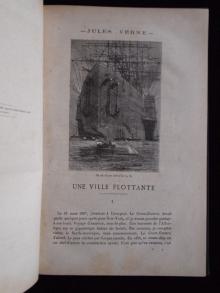 Les forceurs de blocus. English
Les forceurs de blocus. English In the Year 2889
In the Year 2889 Journey to the Centre of the Earth
Journey to the Centre of the Earth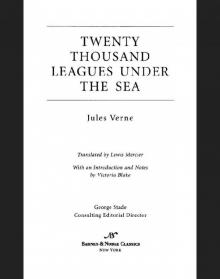 Twenty Thousand Leagues Under the Sea
Twenty Thousand Leagues Under the Sea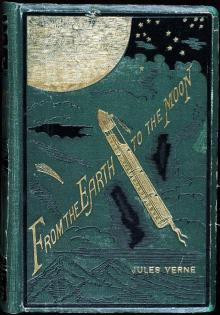 From the Earth to the Moon; and, Round the Moon
From the Earth to the Moon; and, Round the Moon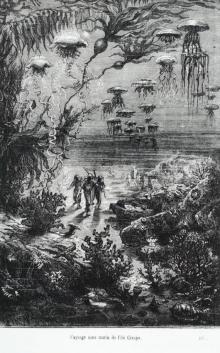 Vingt mille lieues sous les mers. English
Vingt mille lieues sous les mers. English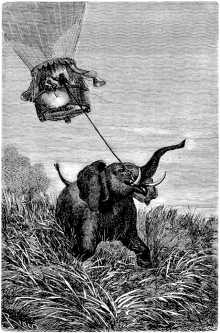 Cinq semaines en ballon. English
Cinq semaines en ballon. English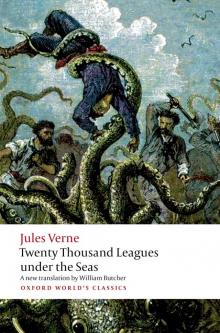 Twenty Thousand Leagues under the Seas
Twenty Thousand Leagues under the Seas Face au drapeau. English
Face au drapeau. English Michael Strogoff; Or, The Courier of the Czar
Michael Strogoff; Or, The Courier of the Czar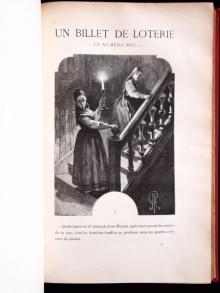 Un billet de loterie. English
Un billet de loterie. English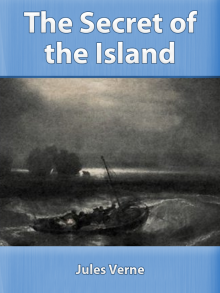 The Secret of the Island
The Secret of the Island Off on a Comet! a Journey through Planetary Space
Off on a Comet! a Journey through Planetary Space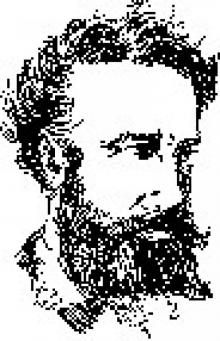 Into the Niger Bend: Barsac Mission, Part 1
Into the Niger Bend: Barsac Mission, Part 1 All Around the Moon
All Around the Moon A Journey to the Center of the Earth - Jules Verne: Annotated
A Journey to the Center of the Earth - Jules Verne: Annotated 20000 Lieues sous les mers Part 2
20000 Lieues sous les mers Part 2 Robur-le-Conquerant
Robur-le-Conquerant Les Index Noires
Les Index Noires Michael Strogoff; or the Courier of the Czar
Michael Strogoff; or the Courier of the Czar 20000 Lieues sous les mers Part 1
20000 Lieues sous les mers Part 1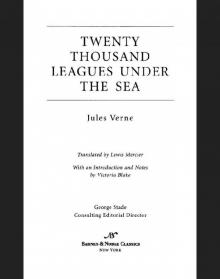 Twenty Thousand Leagues Under the Sea (Barnes & Noble Classics Series)
Twenty Thousand Leagues Under the Sea (Barnes & Noble Classics Series) Five Weeks In A Balloon
Five Weeks In A Balloon Journey to the Center of the Earth
Journey to the Center of the Earth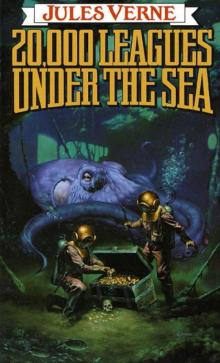 20,000 Leagues Under the Sea
20,000 Leagues Under the Sea Journey to the Center of the Earth (Barnes & Noble Classics Series)
Journey to the Center of the Earth (Barnes & Noble Classics Series)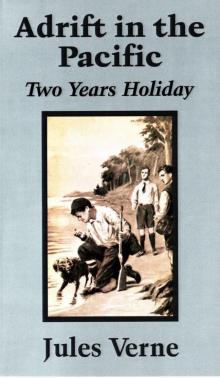 Adrift in the Pacific-Two Years Holiday
Adrift in the Pacific-Two Years Holiday The Collected Works of Jules Verne: 36 Novels and Short Stories (Unexpurgated Edition) (Halcyon Classics)
The Collected Works of Jules Verne: 36 Novels and Short Stories (Unexpurgated Edition) (Halcyon Classics) The Survivors of the Chancellor
The Survivors of the Chancellor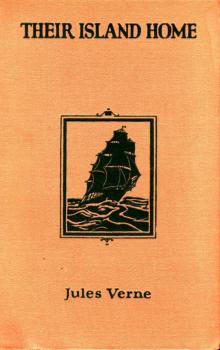 Their Island Home
Their Island Home Le Chateau des Carpathes
Le Chateau des Carpathes Les Cinq Cents Millions de la Begum
Les Cinq Cents Millions de la Begum The Floating Island
The Floating Island Cinq Semaines En Ballon
Cinq Semaines En Ballon Autour de la Lune
Autour de la Lune